21 Garage Gym Ideas Layout Floor Plans That Make Fitness Easy
Transforming your garage into a home gym is a fantastic way to get fit while making the most out of your space. Not only can you work out whenever you want, but you can also customize your garage gym to suit your workout style. Whether you’re into weightlifting, cardio, or yoga, these 10 garage gym layout floor plans will help you create an efficient and motivating environment.
1. The Classic Open Space Layout
If you’re working with a standard two-car garage, the open space layout is perfect. Leave the middle open for exercises that require floor space, like stretching, yoga, or bodyweight exercises. You can add storage racks along the walls for weights, kettlebells, and accessories.

2. The Powerlifting Zone
For those who love lifting heavy, set aside a corner for a powerlifting gym. This layout requires sturdy racks and equipment like a squat rack, bench press, deadlift platform, and dumbbell storage. Keep everything compact and organized to maximize the space while still having room to move.
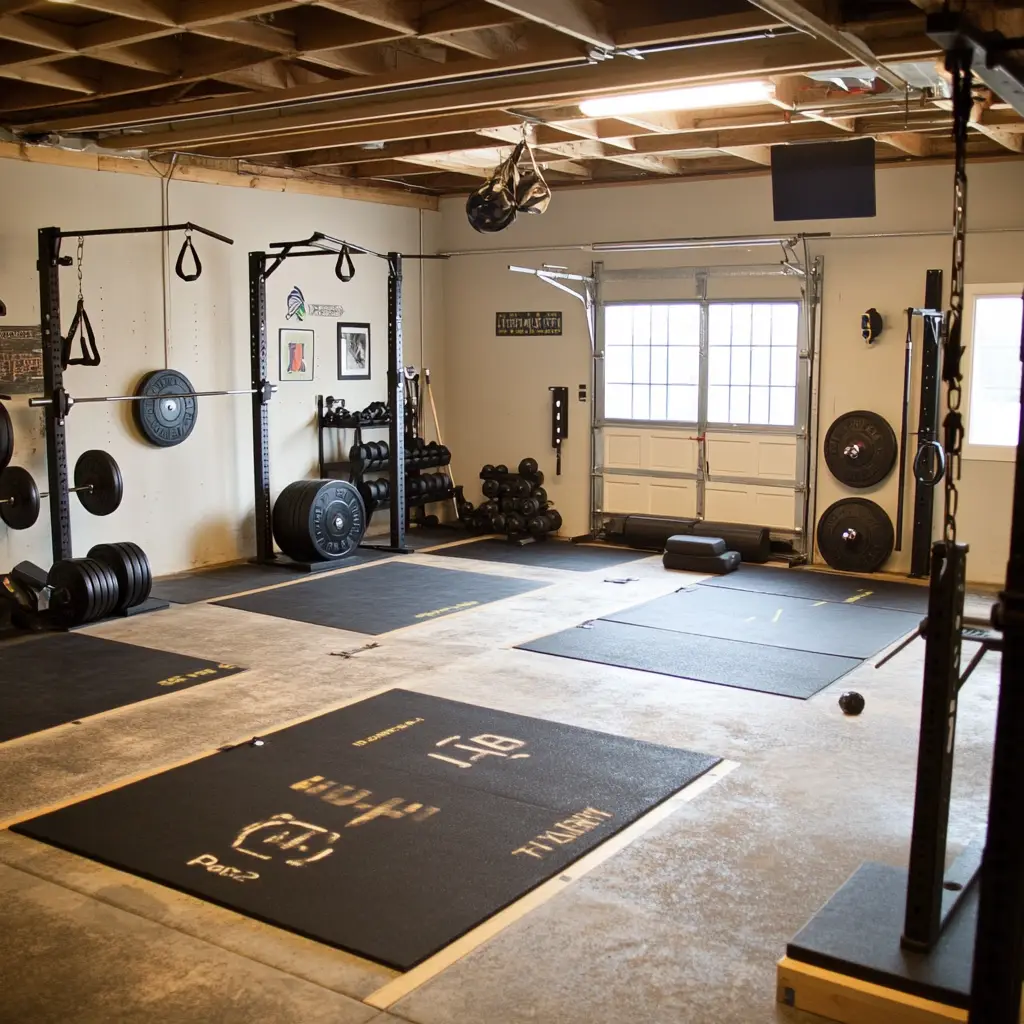
3. The Cardio and HIIT Area
A dedicated cardio and HIIT zone can make your workouts more focused. Use one side of the garage for a treadmill, stationary bike, or rower. Install mirrors to keep track of your form while adding a few mats for high-intensity intervals or bodyweight exercises.
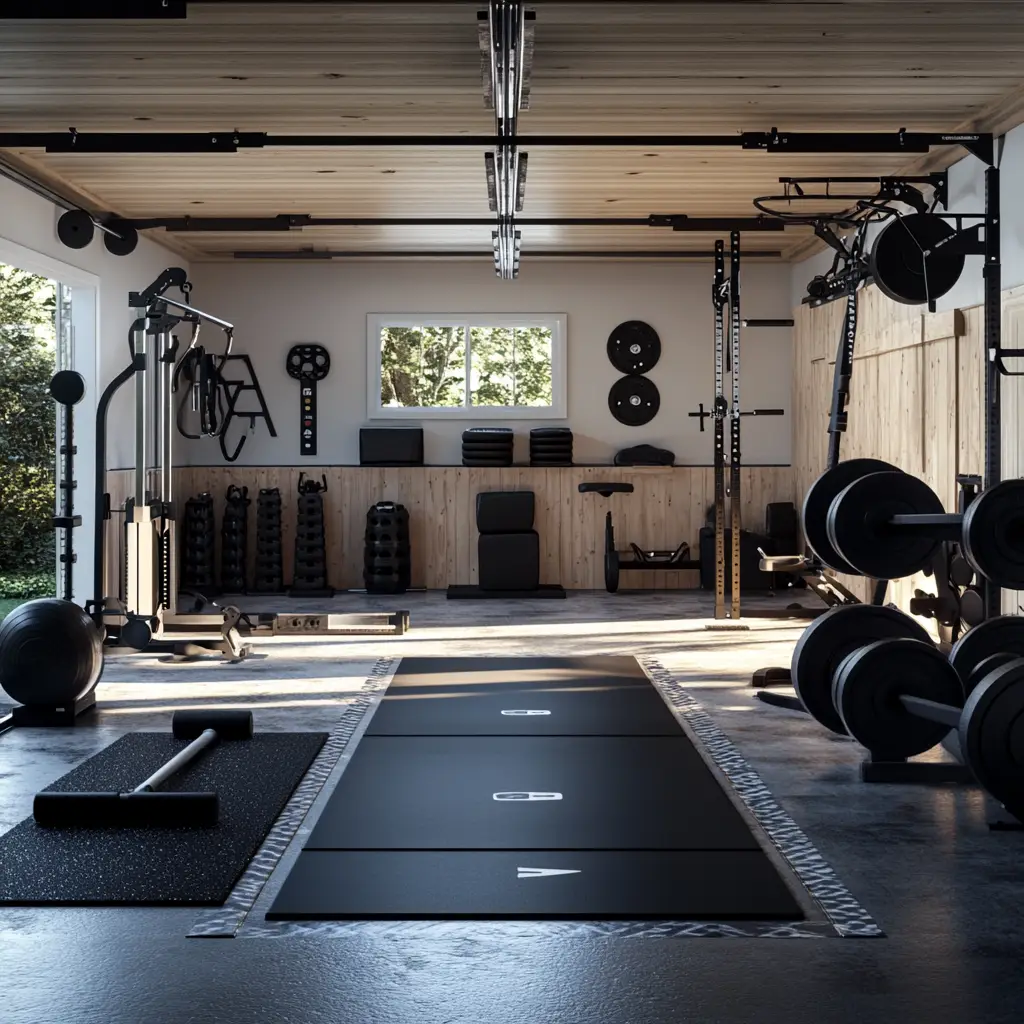
4. The Multifunctional Space
Maximize your garage by blending different types of equipment into one multifunctional layout. Use foldable equipment, like a collapsible bench, a wall-mounted pull-up bar, or compact dumbbells. Store everything vertically or along the walls to free up floor space when you’re not using it.
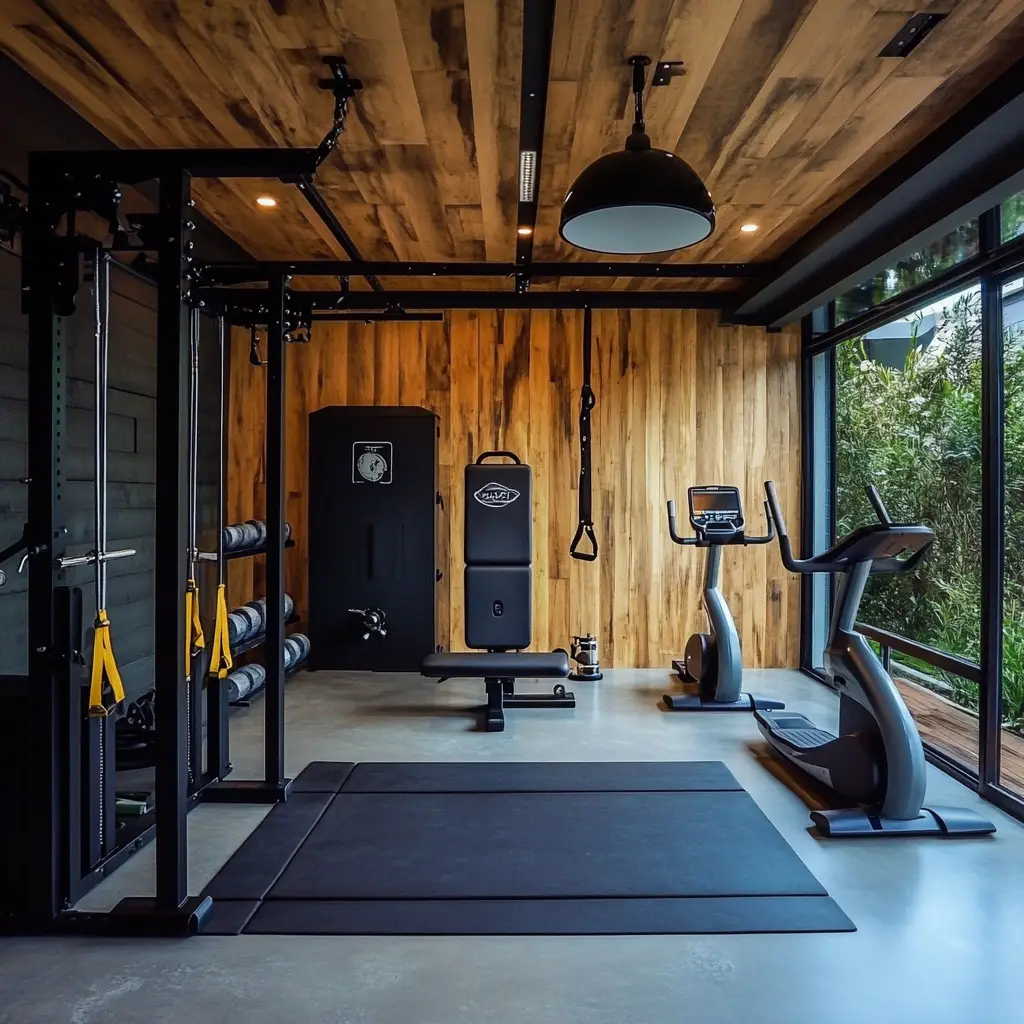
5. The Yoga and Stretching Corner
If yoga is your go-to workout, designate one corner of the garage for it. Add a few mats, foam rollers, and shelves for storage of your blocks and straps. You can even invest in a mirrored wall to check your poses and create a peaceful atmosphere with some calming lighting.
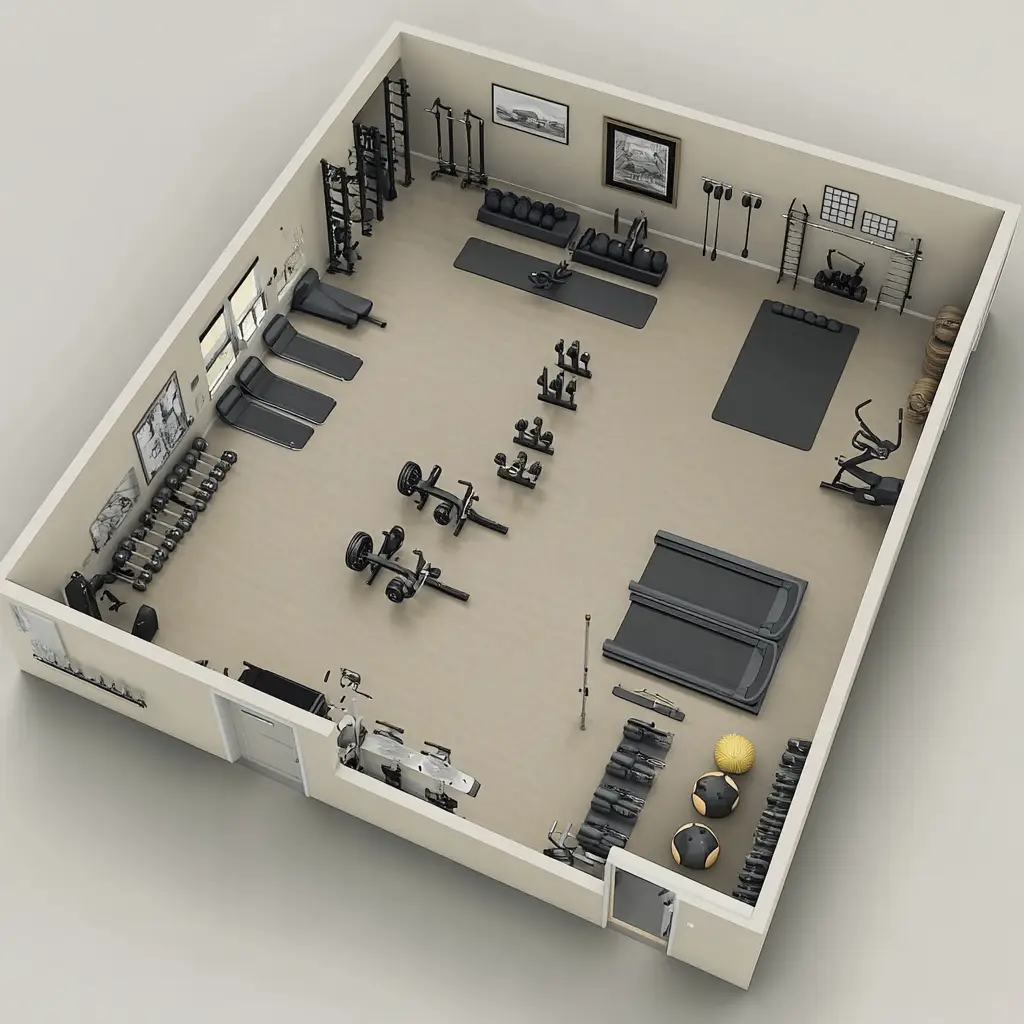
6. The Functional Fitness Layout
A functional fitness layout is all about space for dynamic, full-body movements. Include kettlebells, medicine balls, resistance bands, and dumbbells. This layout requires a lot of open floor space, so position your equipment along the walls and make sure there’s room for jumping, lunging, and sprinting in place.
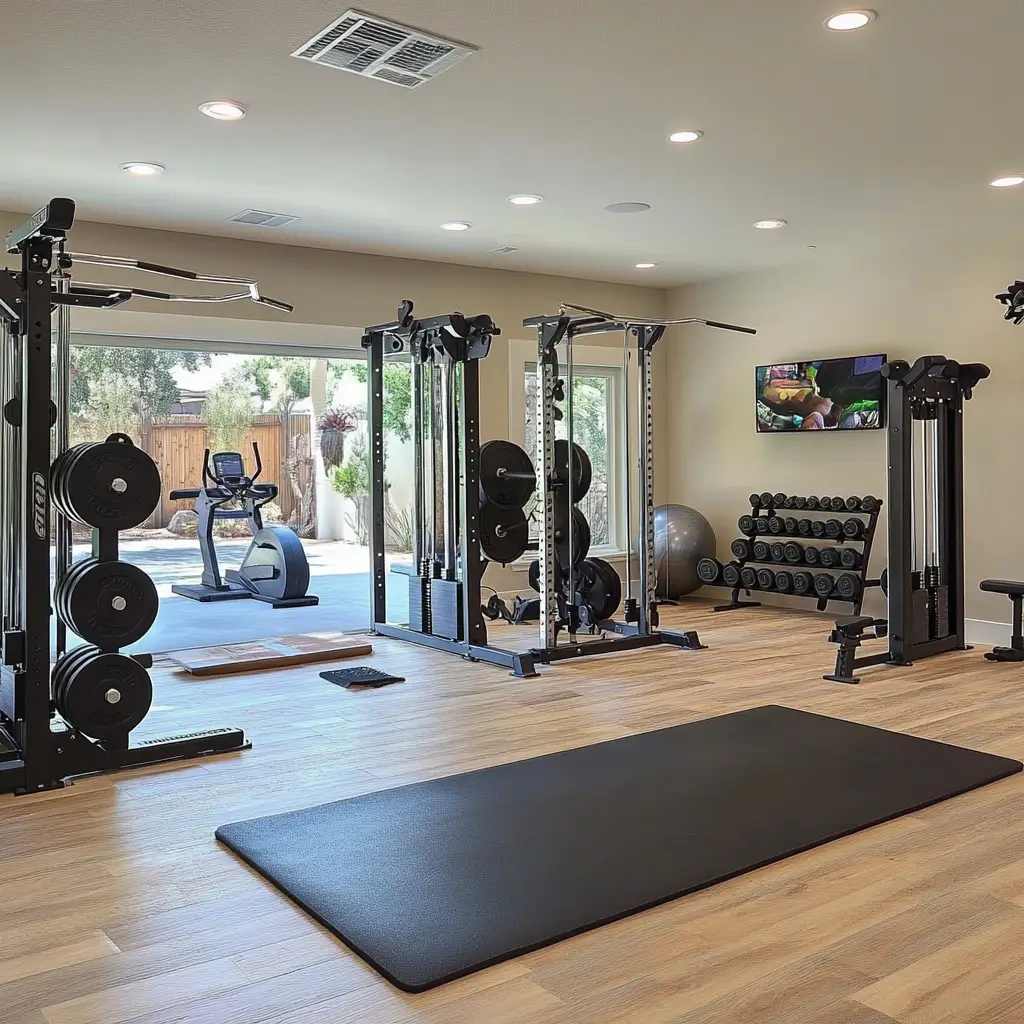
7. The Strength and Conditioning Hub
Strength and conditioning enthusiasts will want a space that includes both free weights and functional training tools. Add a squat rack, cable machine, and kettlebell station in a well-structured layout. You can also incorporate a sled track along the garage floor for added resistance training.

8. The Bodybuilding Corner
For bodybuilding, focus on machines that allow you to isolate muscle groups. Dumbbells, adjustable benches, a leg press machine, and a lat pulldown are all key pieces of equipment. Organize the space so you can seamlessly move from one machine to the next while having space for stretching or cardio between sets.

9. The Minimalist Gym
If you’re after simplicity, a minimalist gym layout works best. Opt for just a few essential pieces: a bench, a pair of adjustable dumbbells, a set of resistance bands, and a pull-up bar. Store everything neatly in wall-mounted racks or compact storage bins to keep the space uncluttered.
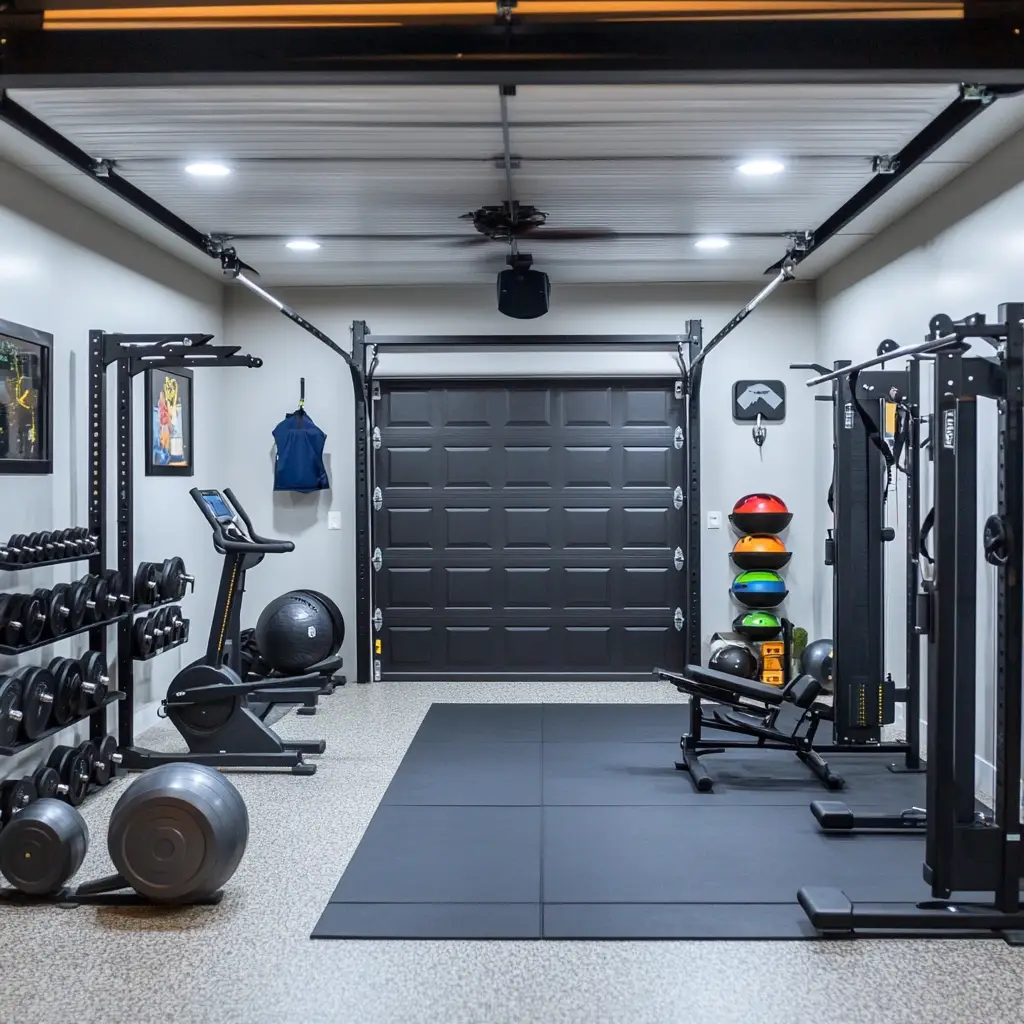
10. The CrossFit Box
A garage gym designed for CrossFit requires a lot of equipment, including barbells, a pull-up bar, bumper plates, jump ropes, and kettlebells. Organize your space by dividing the gym into sections—one for lifting, one for conditioning, and one for mobility work. This layout ensures everything has its place and helps keep your workouts efficient.
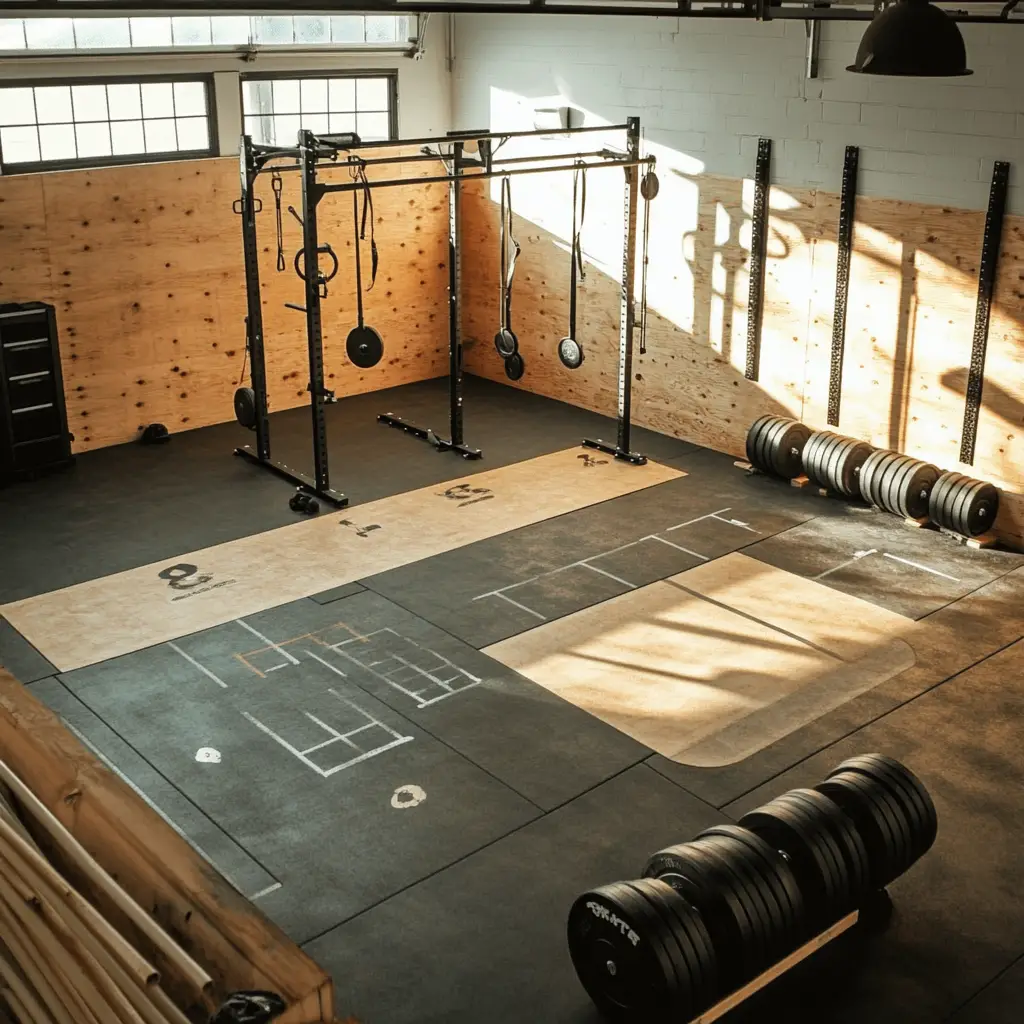
FAQs
How much space do I need for a garage gym?
At a minimum, you should aim for a 10’x10’ area, but the more space you have, the better. For a full garage gym, a two-car garage (about 20’x20’) provides ample room for equipment and movement.
Do I need special flooring for a garage gym?
It’s highly recommended. Rubber flooring, foam tiles, or interlocking mats are great options. They protect your garage floor from damage, reduce noise, and provide cushioning for high-impact exercises.
Can I still park my car in the garage with a gym setup?
If you’re aiming for a dual-purpose garage, use foldable or wall-mounted equipment. You can store everything along the walls or overhead, leaving space for your car when necessary.
How do I store my gym equipment in the garage?
Maximize vertical space with wall-mounted racks, shelves, or pegboards for smaller equipment like dumbbells, resistance bands, and kettlebells. Using overhead storage bins is also a great way to keep things organized.
Should I insulate my garage for a gym?
Insulation can make a huge difference in temperature control and soundproofing. If you plan to use the space year-round, consider insulating the walls and adding a heater or fan for comfort.
Conclusion
Turning your garage into a gym doesn’t have to be complicated or expensive. With the right layout, you can create a space that’s not only functional but motivating. Choose the gym design that fits your fitness goals, whether that’s an open space for bodyweight exercises or a full-on strength training setup. The most important thing is that your garage gym fits your needs and keeps you coming back for more.